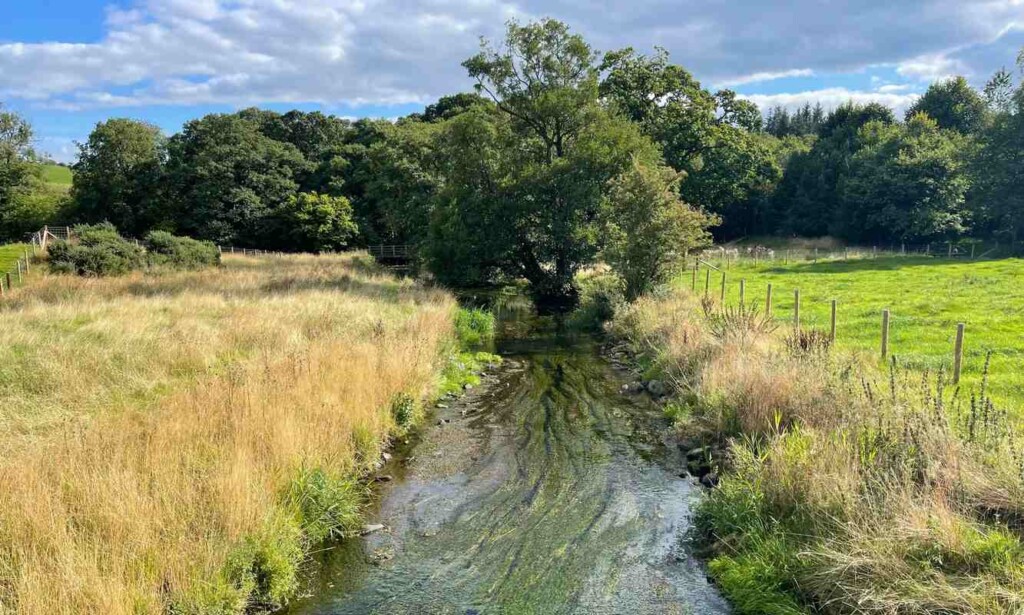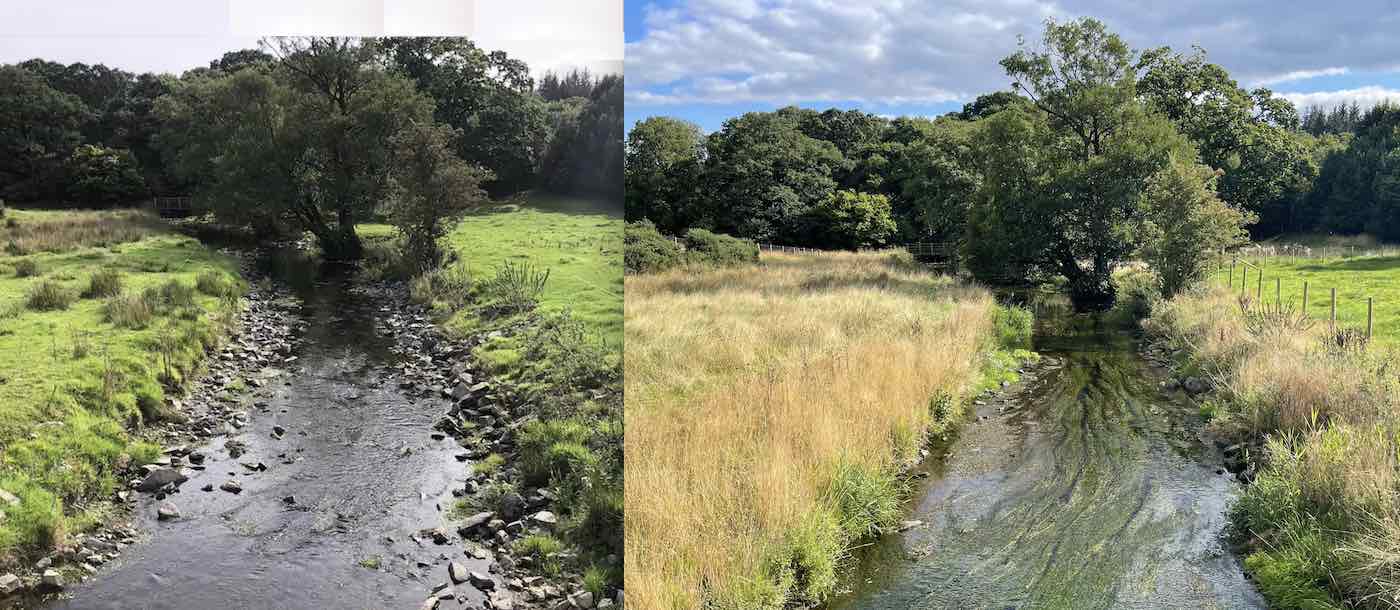
In the UK, farmers are combatting flooding by returning areas of their farms to a more natural state, and seeing the benefits not only in wildlife returning but in flood mitigation.
James Robinson, an intergenerational farmer from Cumbria in northwest England, has worked together with the Ullswater Catchment Management CIC to turn a number of areas of his farm into wetland havens where birds and invertebrates have come back in phenomenal numbers.
To explain a long, related, and detail-filled story in brief, flooding is the UK’s major natural hazard, and part of reason is that many waterways—even small ones—were turned into deep and straight canals hundreds of years ago to permit boats to travel across the country.
Rivers and streams that are deep, straight, and have high banks channel water at much greater volumes and speed than natural, meandering streams—a process which is exactly what some UK farmers like James Robinson have been working to reverse.
The Ullswater CIC, or Community Interest Company, has watched their model of stream restoration spread across the region, which for English readers includes Glenridding, Windermere, West and South Cumbria, and Ullswater.
“People seem to like this model,” said Danny Teasdale, the CEO of Ullswater Catchment Management, in a long, on-site interview conducted by DEFRA.
“And then farmers talk and then someone else will get in touch. We are growing. We’ve been able to employ local contractors, and any money that comes into the CIC goes locally as well,” he said.
There have always been streams running through Strickley Farm where James Robinson and his family have been farming for generations. He calls them “becks” and they have been the epicenter of much flooding over the years.
Becking the trend of flooding
Every so often, Mr. Robinson has had to dredge the streams, pulling up weeds and clearing them out—which was supposed to be flood control, but he never saw it make much of a difference at all.
“Now this bit of land that we had here, 4 or 5 acres—it was rubbish,” he says in a rich northern accent, “in agricultural terms; it was rubbish, but environmentally and its potential or habitat was huge,” Robinson told DEFRA. “So might as well really put it to something where it’s actually going to do a better job than it was for farming.”
ALSO FROM ENGLAND: Wild Bison Return to UK After Thousands of Years – And Are Ready to Tear S*!# Up
Teasdale explains that he surveyed around to map the lowest areas, before re-meandering the stream, putting some ponds where the surrounding depressions were located, and planting about ten acres of trees in clumps along it to prevent soil erosion. Robinson also fenced off the area from his cattle to ensure the vegetation had a chance to robustly regrow.
“The amount of life that has come is absolutely phenomenal,” he told the Guardian. “We get the extra bird life as well. It’s now a fantastic area where there’s always water, there’s always standing water, even when it’s really, really dry.”
“There’re dragonflies in it, there’s snipe in it,” said Teasdale, before adding that Robinson had even seen a barn owl, which hasn’t been seen on the farm in 40 years.
OTHER REWILDING SUCCESS STORIES: Irish Metalhead Turns His Ancestral Estate into Model of Rewilding: It Naturally Grew Into Biodiverse Eden
“We’ve come down here one evening and there it was hunting, and we see it most evenings now hunting over there,” says Robinson.
There are numerous other benefits to restoring the natural path and character of streams and rivers, including for carbon sequestration. Grasslands, and in particularly wetlands, store more carbon underground than forests, because there’s less decomposition of plant material.
YOU MAY ALSO LIKE: Abandoned Ohio Golf Course Being Rewilded into Public Land with Native Fish and Wildlife Returning
Furthermore, in the largest study of its kind in the UK, scientists at the UK Center for Ecology & Hydrology found that numbers of the majority of species did better at a partially-rewilded farm than in other comparable farmed landscapes, but without a drop in yield corresponding to the surrender of farming acres.
The scientists put this down to a variety of “ecosystem services” that are difficult to quantify all together, but could involve such things as like natural pest control from increased numbers of insect-eating birds.
WATCH the interview and see the project for yourself…
SHARE This Great Project That’s Making Room For Nature In The North of England…




















